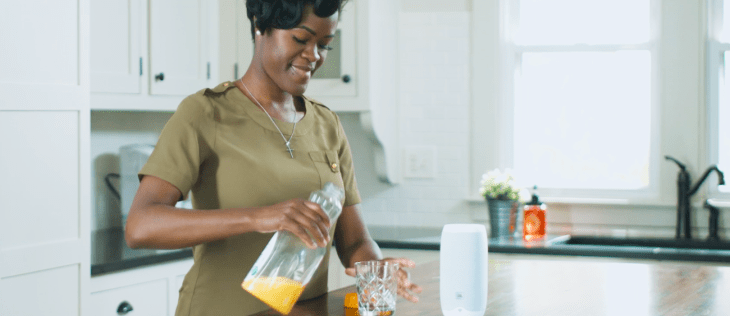Following the latest wave of price cuts at Amazon’s Whole Foods, announced Monday evening, Walmart today introduced its own plans to challenge Amazon on grocery shopping through a partnership with Google. The company is rolling out a new voice-ordering capability, Walmart Voice Order, which works across Google Assistant-powered platforms, including Google’s smart speakers and displays, smartphones, smartwatches and more.
The news follows several efforts by Walmart to enter voice-based commerce, despite not offering its own hardware or voice assistant platform, as Amazon does with Echo and Alexa, respectively.
Two years ago, Walmart and Google partnered on voice-based shopping through Google Home devices. Specifically, customers could easily reorder favorites through Google’s shopping service, Google Express. However, Walmart disappeared from Google Express’ marketplace this January, and was more recently said to be testing an online grocery voice application with a small number of VIP customers ahead of a spring launch.
The technology works similarly to what was developed for the Walmart-Google Express deal. For example, when a customer asks to order an item, the assistant will know to reorder the customer’s preferred item based on their order history. The assistant will also inform the customer which item it’s choosing and the price point.
This feature means the customer doesn’t have to speak the full name of an item when making a request. Instead, they could say just “milk” and the assistant would know they mean the “1 gallon of 1% Great Value organic milk” they ordered the last time.
To get started, Google Assistant users launch the feature as they would any other voice application. They’ll say: “OK Google, talk to Walmart.”
That’s still not as simple as Amazon’s assistant, though. Because of its first-party platform advantage, you can say, “Alexa, order milk” to order from Whole Foods, or “Alexa, add milk to my shopping list” for future orders or general list-making.
Walmart’s voice app is meant to be used to round-up items for a later purchase by adding them to a cart, instead of forcing a checkout upon each new addition. This lets you add an item as you realize you’re out — something that better reflects how customers use voice to shop.
“We know when using voice technology, customers like to add items to their cart one at a time over a few days — not complete their shopping for the week all at once,” noted Walmart’s SVP of Digital Operations, Tom Ward.
Customers’ tendency to shop in bits and pieces was one of the big oversights in the 2018 report that claimed voice shopping was a dud. It didn’t incorporate into its findings one of the most popular voice features — list-making — and instead only considered voice shopping had occurred when orders were placed immediately. In reality, lists are a big driver of later e-commerce purchases but aren’t as easily tracked.
Walmart says the new voice-shopping feature will launch to all Google Assistant-powered devices this month, including Google Home, Android and iPhones, smartwatches and other platforms, including those from third parties like JBL or Lenovo, among others. The rollout will be staged, meaning over the next few weeks more and more customers will get the update.
Voice shopping for grocery pickup will be offered at more than 2,100 Walmart stores and for online delivery at more than 800 stores.
The retailer says other platforms besides Google will be added in time, but that isn’t likely to include Alexa, which today holds a 60+ percent market share on smart speakers, according to eMarketer.
However, grocery shopping is a sizable business for Walmart, accounting for more than half its annual sales. Newer technology initiatives, like online grocery, have been successful with its customers, as well.
According to a recent report from financial services firm Cowen and Company, Walmart’s curbside pickup could generate $30 billion to $35 billion for the grocery industry annually by 2020 and that today, 11 to 13 percent of its customers use the pickup service.
